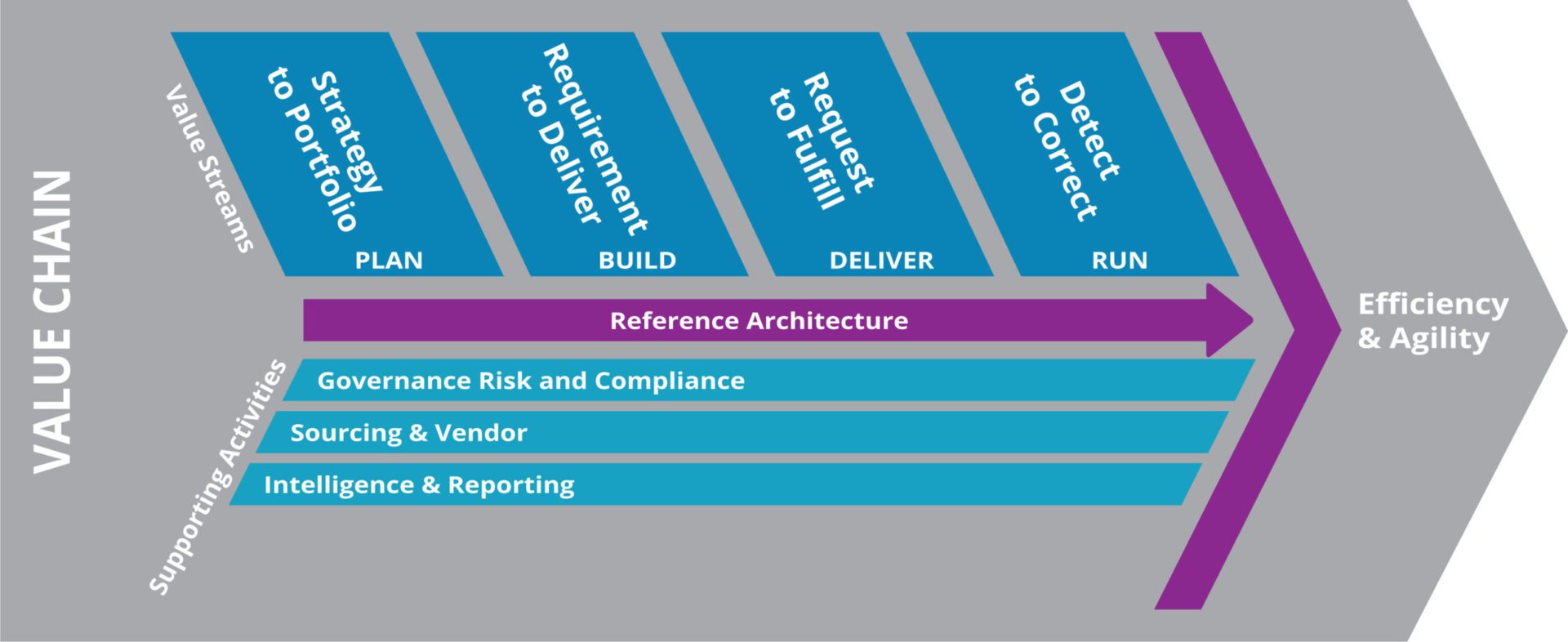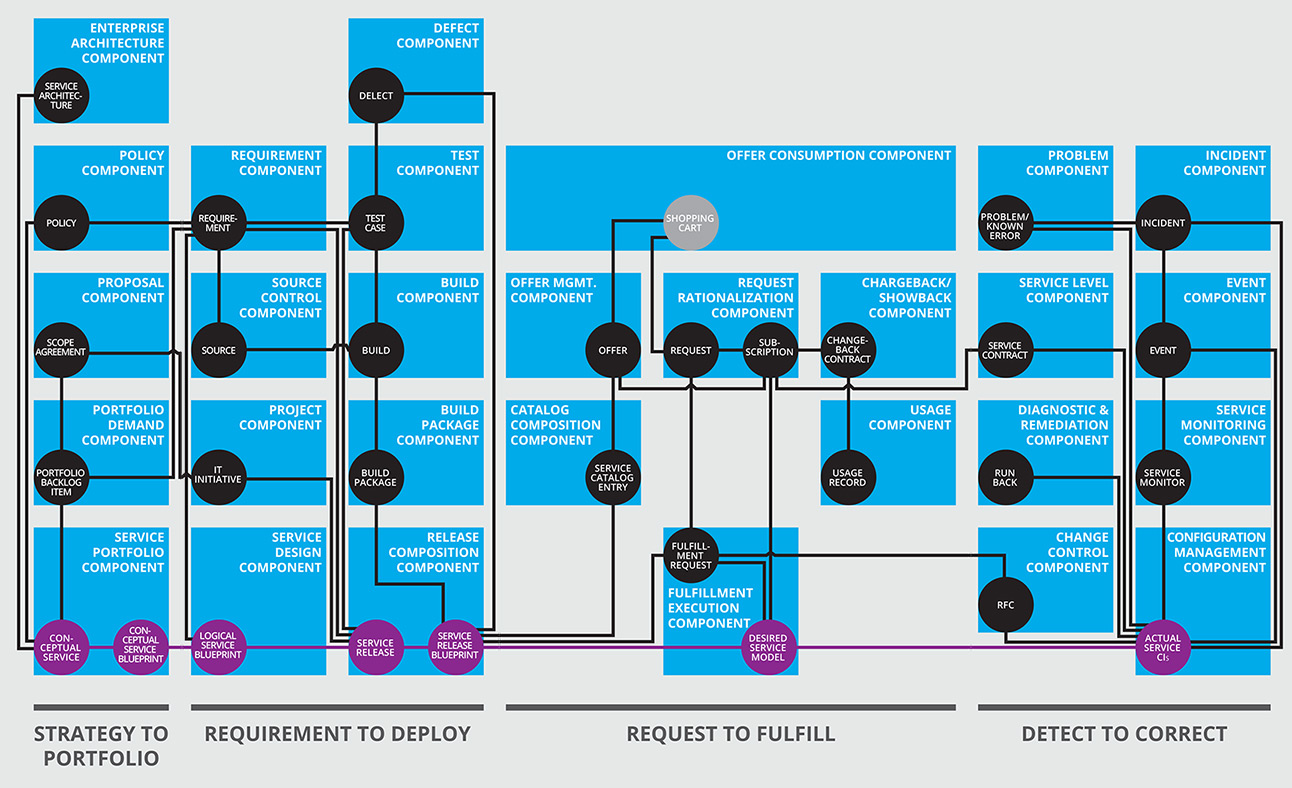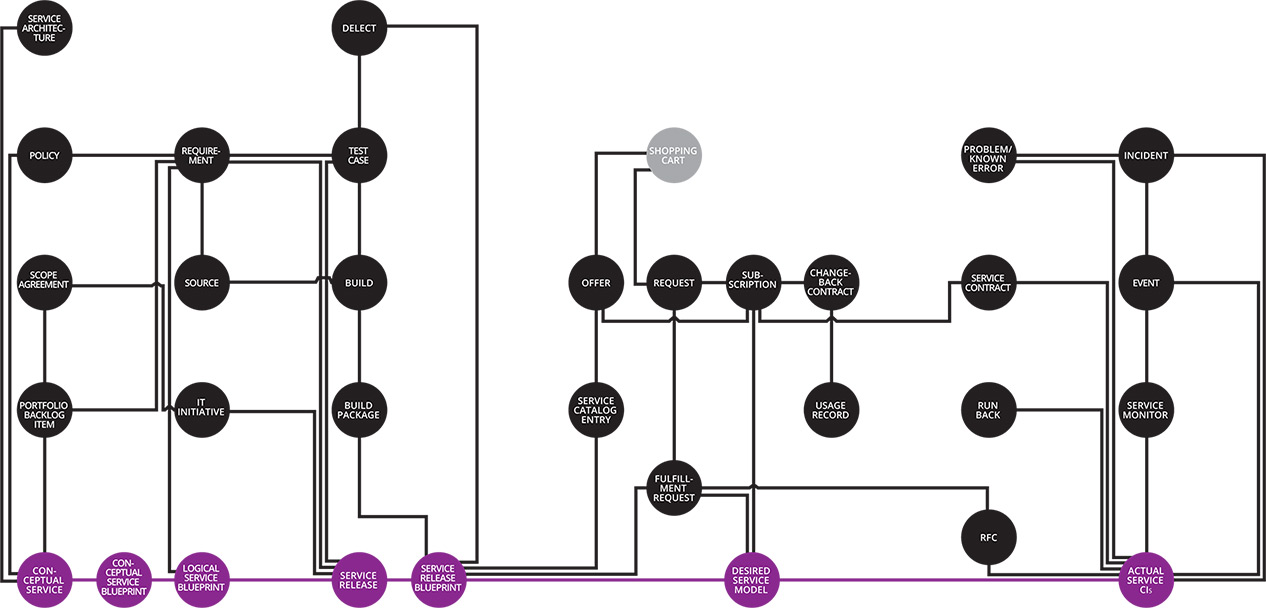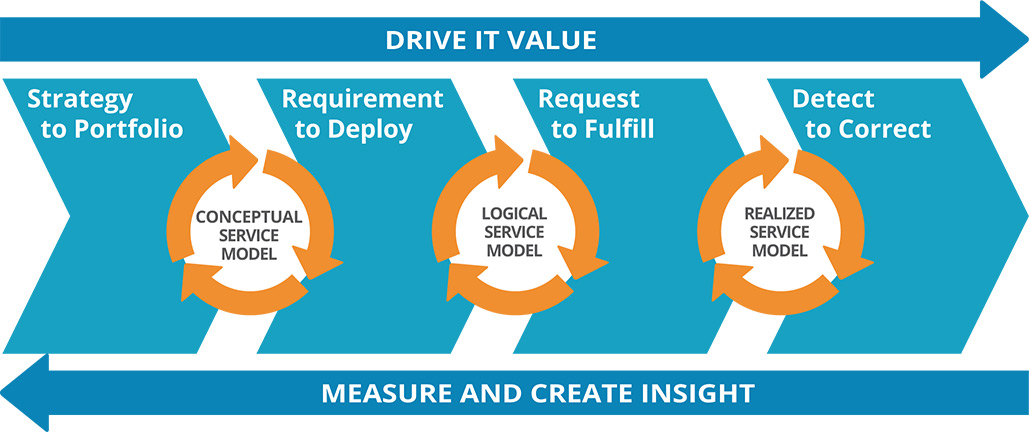Released in Q4 2015, the IT4IT standard vision is a vendor-neutral Reference Architecture for managing the business of IT, consisting of a formal IT operating model, based on the value chain concept that revolutionized manufacturing, known as the IT Value Chain.
The IT4IT standard allows you to run the IT function within an organization as a production-based business in its own right.
The IT4IT standard does not replace anything. It complements and enhances your current structures. The important work done using models such as ITIL and COBIT offer you standards on a process level but gives nothing prescriptive.
They do not tell you how to manage your service models and life cycles, or what kinds of systems to put in place. The IT4IT standard is the natural next step.
The Value Chain
The IT Value Chain comprises four major IT value streams, which align to what IT traditionally calls “Plan, Build, Deliver, Run”. The standard is also made up of a three-level functional reference architecture, and a set of supporting activities.

The Four Value Streams
The four major IT value streams are:
- Value Stream one – Strategy to Portfolio, or S2P. Define your strategy to balance and broker your portfolio.
- Value Stream two – Requirement to Deploy, or R2D. Prioritize every requirement to build the best services and deploy them.
- Value Stream three – Request to Fulfill, or R2F. Handle each request by streamlining the process to fulfil it, and…
- Value Stream four – Detect to Correct, or D2C. Seek to detect issues and correct them before they impact the user.
The Reference Architecture
At the centre of the Value Chain sits the Reference Architecture, underpinning and tying together the Value Streams.
 This diagram shows the first level of the IT4IT Reference Architecture. On the first appearance, it looks rather linear, but this is not the case. It actually reveals a continuous flow, with feedback running all the way through it.
This diagram shows the first level of the IT4IT Reference Architecture. On the first appearance, it looks rather linear, but this is not the case. It actually reveals a continuous flow, with feedback running all the way through it.
The blue boxes are the Functional Components, which act upon the Key Data Objects (the black circles).
Notice that the Key Data Objects are tied together with solid lines. These lines represent the Relationships between Objects.
The purple circles represent a special designation of the Data Object, the Service Backbone Data Object. These are characterized by physical objects in the Service Model.
 Finally, strip off the Functional Components and you have a great view of the Relationships between all of the Key Data Objects, and how you can trace them from the beginning to the end, and from the end to the beginning by referring to the Service Backbone Data Objects.
Finally, strip off the Functional Components and you have a great view of the Relationships between all of the Key Data Objects, and how you can trace them from the beginning to the end, and from the end to the beginning by referring to the Service Backbone Data Objects.
The Service Model
The Reference Architecture is itself characterized by the Service Model. The Service Model depicts the life cycle of a service as it moves through the Value Streams.

The IT4IT standard identifies three life-cycle phases during the journey through the Service Model:
- The Conceptual Model
- The Logical Model
- The Realized Service Model
The Conceptual Model could be described as the “marketing plan” of the service. It represents the beginning of understanding why you’re offering the service, who the customers are and when and how you are going to offer it. It is the first thought regarding the service’s costs and benefits.
The Logical Model encompasses the typical models you might use in software development and project management and the actual creation of the capabilities that the service needs to operate.
In the Realized Service Model, the service may be released or deployed into the operating environment and staged in the Service Catalog for the customer to subscribe to. It becomes a true physical service.



